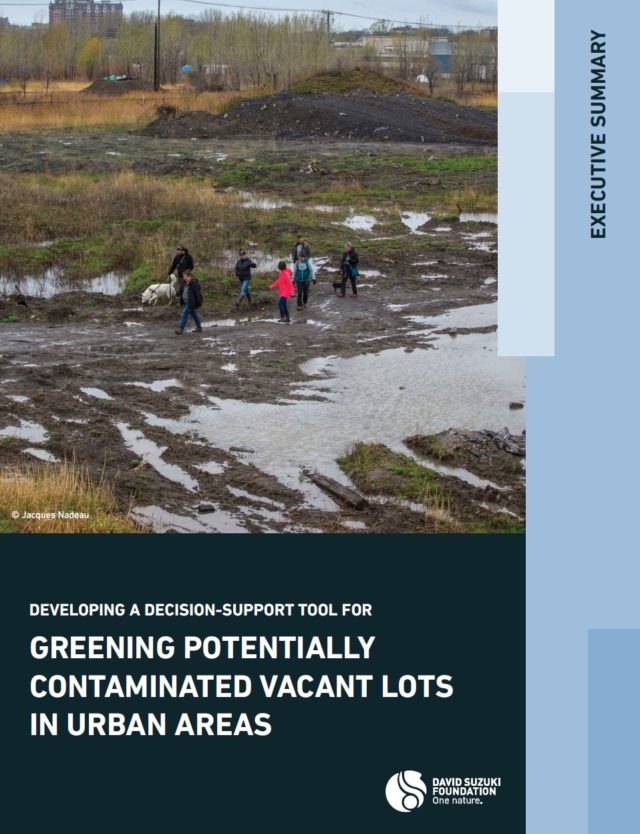Scientific Report Summary: Developing a Decision-Support Tool for Greening Potentially Contaminated Vacant Lots in Urban Areas
Published by:
David Suzuki Foundation
Authored by:
Maxime Fortin Faubert,
Louise Hénault-Ethier,
Catherine Hallmich
Climate solutions, Cities land use, human health and wellbeing, climate change
This executive summary presents a decision-support mapping tool that prioritizes the greening of potentially contaminated vacant land based on equity and climate change adaptation. The tool is intended to assist municipal decision-makers, organizations and citizens in planning and deploying green space in their jurisdictions. The study was conducted on a territory located in the cities of Montreal and Montreal-East (Quebec, Canada), and explores a methodology that integrates multi-criteria evaluation with geographic information systems:
- Ten evaluation criteria, focusing on equity and climate change adaptation, were selected to meet Montreal’s greening objectives.
- A weight relative to their respective importance was assigned to each criterion through a hierarchical process analysis. Once weighted, the criteria were overlaid using the weighted linear combination method.
- A composite map shows the location and greening priority level of potentially contaminated vacant lands, i.e., not a priority, low priority, medium priority, priority and high priority.
The study shows that cities have great potential to develop green space on their own potentially contaminated vacant land and demonstrates the value of using such a decision-support mapping tool to prioritize and guide cities’ greening interventions to meet their greening goals.
